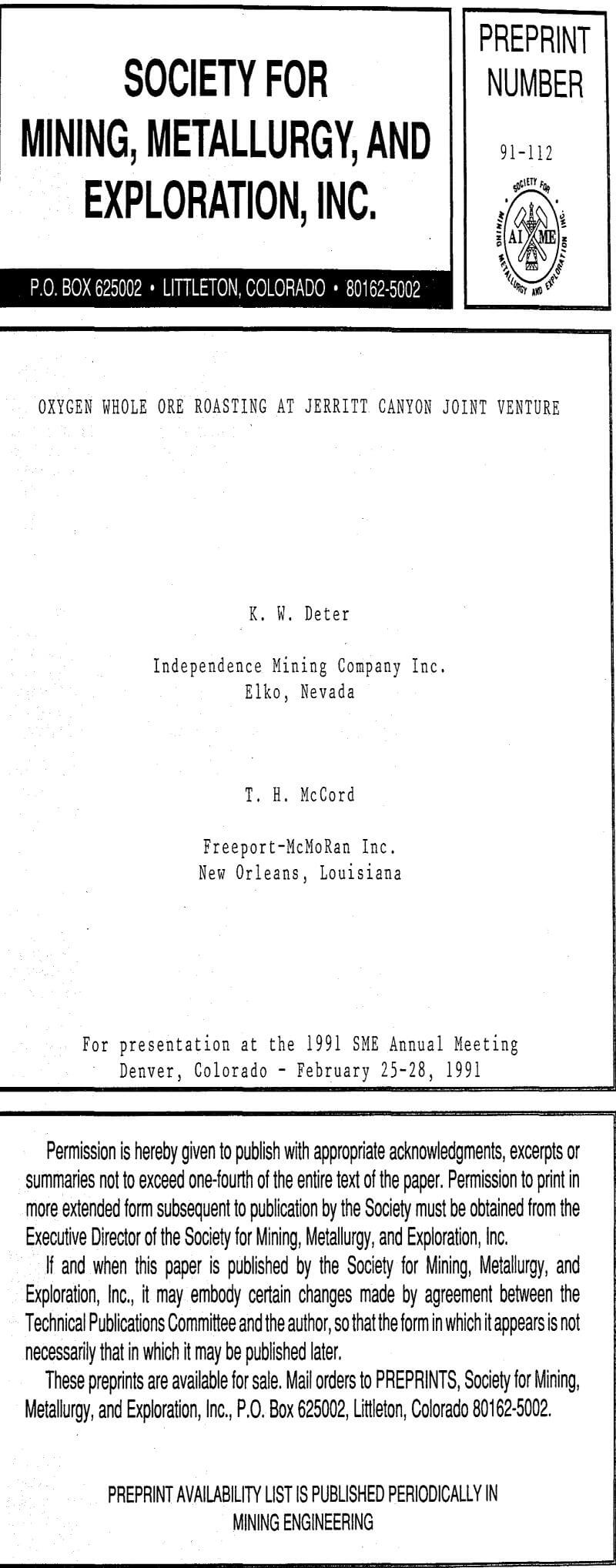The complex geology of the ore body prevented good segregation of a pure oxide fraction in sufficient tonnages to maintain the two circuit operation. Before plant start-up, Freeport recognized that small quantities of carbonaceous ore added to the oxide circuit would produce unacceptable reductions in gold recovery. The carbonaceous ore contributed sufficient preg-robbing organic carbon contaminants, even in minute proportions, to successfully compete with the activated charcoal. Unfortunately, contamination from residual carbonaceous ore remaining in the haul trucks was as detrimental to recovery as incomplete segregation of ore types at the point of mining.
Three oxidative pretreatment techniques were investigated and compared to chlorine oxidation:
- High Pressure Oxidation (Acid and Alkaline Autoclave)
- Biological Oxidation
- Roasting
The main ore zones contain significant limestone which resulted in extremely high acid consumptions in an acid autoclave system and oxidation of organic carbon was not successful. An alkaline autoclave system required uneconomically high temperatures and pressures to oxidize the organic carbon constituents in the Roberts Mountains hosted ores.
Coarse ore roasting and roasting of a pelletized product of ground ore produced incomplete oxidation (burn out of organic carbon) of the interior of the ore particles resulting in low recoveries. Fluid bed roasting became the chosen process because uniform oxidation of the ore could be obtained at shorter time intervals, and temperature control was excellent compared to other methods.
The original concept of roasting ores at Jerritt Canyon was to replace the chlorination process for the highly refractory portion of the ore while chlorination would continue on the less refractory ores in the existing facility. A 1900 MTPD (2000 STPD) roasting facility was designed, and capital and operating costs were calculated. The resultant operating cost improvements were so positive that the plant size was upgraded to 3175 MTPD (3500 STPD) to treat the most refractory half of the Jerritt Canyon Joint Venture ore reserves.
The roasting unit at Jerritt Canyon consists of dual identical two stage fluid bed roasters, each rated at 1900 metric tons (2000 short tons) per operating day. Ore is withdrawn from the feed bin by a variable speed screw in tandem with a rotary air lock. The material is lifted by a bucket elevator to the roaster feed system. From the feeder, the ore passes into the roaster. Temperature is controlled by addition of coal and trim firing of diesel fuel. Temperature and retention time is specified to burn out the 0.5 – 1.5 weight percent organic carbon and 0.5 – 1.0 weight percent sulphide sulphur in the ores. Roaster exit gas is processed by several gas cleaning stages for particulates, sulphur dioxide and mercury. After the ore exits the roaster, gold recovery is accomplished by a standard CIL circuit.

